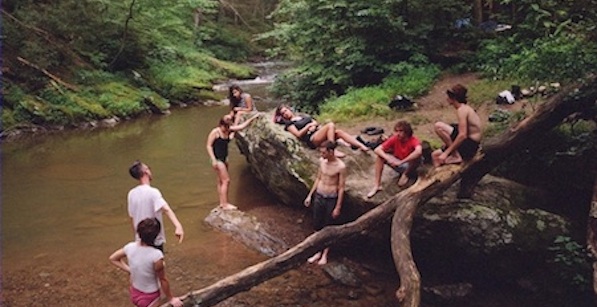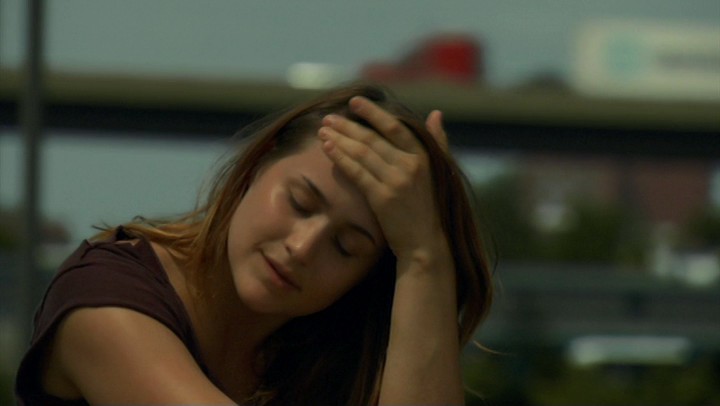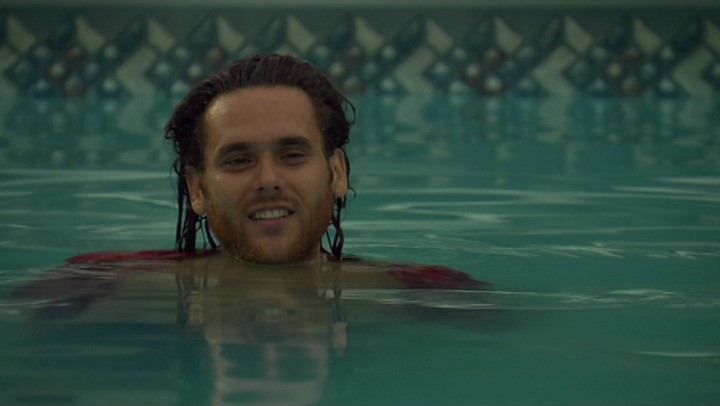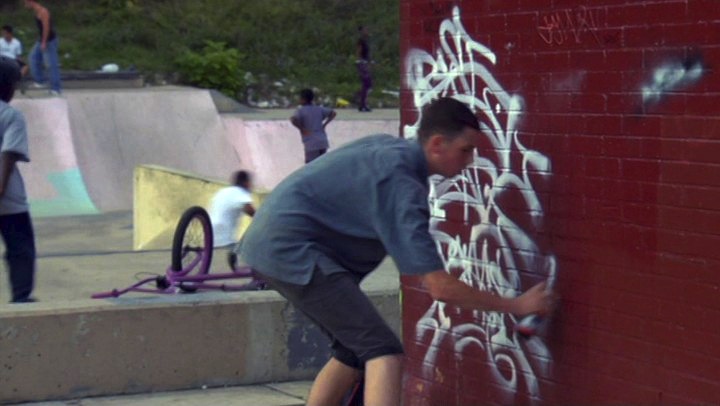“Putty Hill is a movie about people living in a place,” writes The New Yorker’s Richard Brody, and there is perhaps no more succinct or perceptive description of the film than this. Its threadbare narrative revolves around the recent death and imminent funeral of an overdosed heroin addict named Cory—a tragic, spectral figure who functions as a kind of Laura Palmer-like structuring absence—but the real focus here is the modest working class community in Baltimore within which Cory had spent his too-short life ensconced, and what emerges through the film is not so much a portrait of one young man as an illustrated panorama of the place he called home. Putty Hill is an expression of pronounced locality: in its regional intimacy and lucid delineation of both public and private space, it proves itself authentically grounded in something real, not only firmly situated in a neighborhood but, more significantly, committed to conveying the lived experience of those who live there.
The arrival in the early 2000s of a reasonably viable digital cinema—that is, the point at which inexpensive or consumer-grade digital technology could produce an image of more or less theatrically reproducible quality—promised a much-needed upsurge in new authorial voices, particularly those who had been traditionally marginalized or implicitly banished from the industry. It promised, too, to encourage a more parochial filmmaking practice, reconfiguring the New York/Los Angeles dichotomy into which the American cinema had been historically divided as a panoply of smaller and more localized cinematic communities. Part of the appeal of Putty Hill, of course, is the familiarity with which it approaches its milieu. There is nothing even vaguely touristic about the approach: one never gets a sense of class slumming, or of anthropological interest, as one does in outsider-driven smalltown films like Harmony Korine’s Gummo or Terrence Malick’s To the Wonder. The film is guided not by curiosity but by fondness and empathy, a desire to simply linger in space rather than to aestheticize it.
Which is not say that the film is without romantic qualities. Its director, Matt Porterfield, belongs as much to the fabric of the community in which his film is set as any of the characters on screen, and his intuitive affection for the place and its people manifests itself as a certain appreciable warmth in his style. Films about cities are often described as postcards or love letters to their surroundings, but that sort of description seems more applicable to environments whose formal qualities already lend themselves well to exhibition, cities whose architecture has long been rendered iconic. Porterfield, by contrast, has no rich legacy of iconography to lean on: his neighborhood has the battered look of a place lived in but little visited, forested on one side and lined with many-storied stone highways on the other. And so he gravitates not to its most flattering sites but to the ordinary fixtures of a community where people live and work every day: a strip mall Greyhound outpost stuck beside a rundown KFC, someone’s standalone backyard pool, a makeshift paintball arena on the edge of the woods.
In lieu of anything like a coherent narrative structure, Putty Hill is organized instead around space: each scene takes root in a new, seemingly self-contained locale, communicating (often in direct address) with the people who happen to either arrive or be there already before finally decamping to somewhere else across town. Place comes to dictate both content and form, determining the nature of the conversations conducted there and the sights to be savored or lingered over. (In this respect it seems clear that Porterfield has been influenced not only by the great documentarians of location, Les Blank and Frederick Wiseman, but more overtly by the staged docudramas of Portuguese filmmaker Pedro Costa, who in everything from Colossal Youth to Ne change rien, privileges space in order to emphasis its centrality to the people within in.) Putty Hill’s many outdoor sequences highlight the importance of public space to the neighborhood, a co-opting of natural resources for free consumption and leisure. The cover of trees and a few pieces of assembled wood become an arena for paintball matches; a small cliff and creek are a prime teenage hangout and swimming hole; even a modest local church, during Cory’s funeral service, turns into an impromptu karaoke bar.
Putty Hill’s most important sequence takes place at a local skatepark—one of the neighborhood’s more elaborate and expensive-looking municipal features teeming with kids and their decks. “Anybody can come here,” a teenager explains to Porterfield, off-camera. “You got your random junkies, you got your drunks, then you got your potheads, you got your skateboarders, BMXers. They’re tearin’ shit up. We all feed off each other.” The atmosphere is invigorating. The point here is to see the skatepark as more than the simple contours of pavement which constitute its boundaries: these kids are nearly all from working class backgrounds, born into situations in which, to quote Brody again, “the struggle for money and work, the menace of addiction, the lure of crime, and the fragility of family weigh heavily.” Wealth draws people in toward themselves, affording them the luxury of isolation and solitude, furnishing a life of interiority and self-entertainment. Without it people turn to public space: the skatepark becomes an opportunity for communal enjoyment, a free outlet for energy and creative passions, not only a hangout but a thriving, vibrant network of individuals. Putty Hill is uncommonly attuned to these qualities. It recognizes that space is inherently political. It reveals the people who populate spaces precisely because it is the space which occupies its primary interest—it understands that to see people is to see their habitat, their homes, their parks and creeks and alleys. It is a movie about people living in a place and it is great because it sees how much that can mean.








